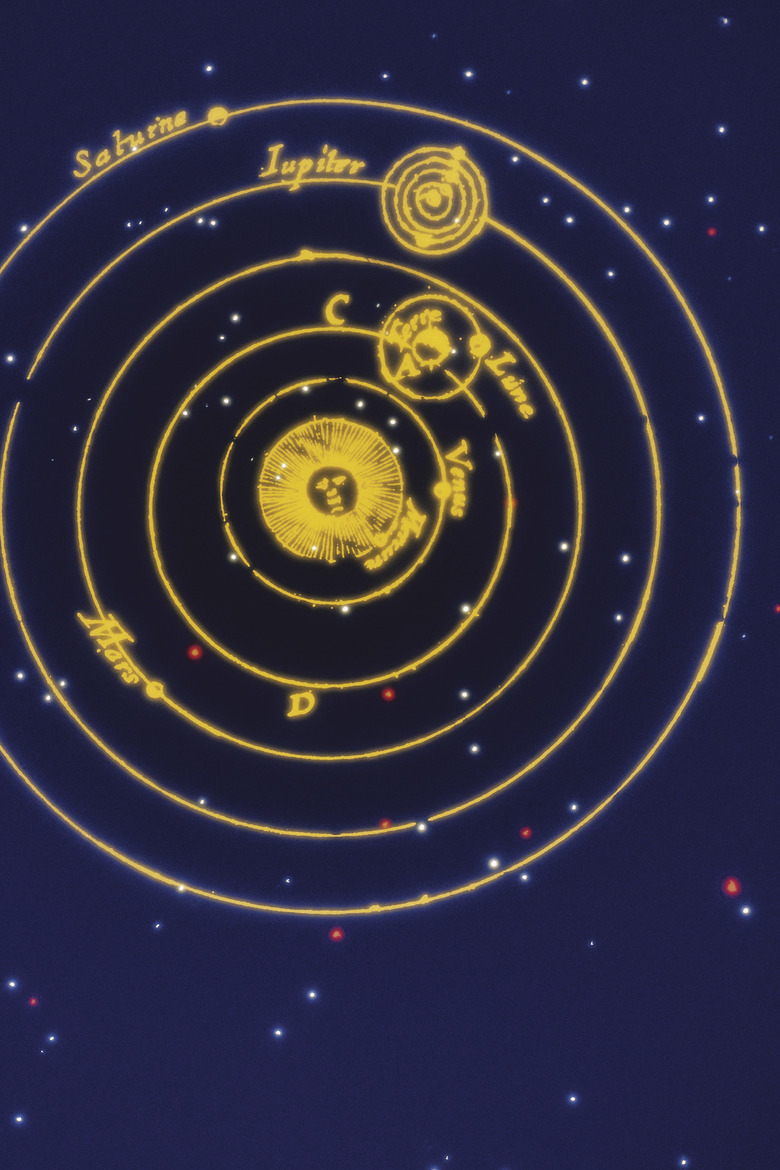How Does Gravity Cause Planets To Orbit Stars?
In the everyday world, gravity is the force that makes objects fall downward. In astronomy, gravity is also the force that causes planets to move in near-circular orbits around stars. At first sight, it is not obvious how the same force can give rise to such seemingly different behaviors. To see why this is, it is necessary to understand how an external force affects a moving object.
The Force of Gravity
The Force of Gravity
Gravity is a force that acts between any two objects. If one object is significantly more massive than the other, then gravity will pull the less massive object toward the more massive one. A planet, for example, will experience a force pulling it toward a star. In the hypothetical case where the two objects are initially stationary with respect to each other, the planet will start to move in the direction of the star. In other words it will fall toward the star, just as everyday experience of gravity would suggest.
The Effect of Perpendicular Motion
The Effect of Perpendicular Motion
The key to understanding orbital motion is to realize that a planet is never stationary relative to its star but moving at high speed. For example, the Earth is traveling at approximately 108,000 kilometers per hour (67,000 miles per hour) in its orbit around the sun. The direction of this motion is essentially perpendicular to the direction of gravity, which acts along a line from the planet to the sun. While gravity pulls the planet toward the star, its large perpendicular velocity carries it sideways around the star. The result is an orbit.
Centripetal Force
Centripetal Force
In physics, any kind of circular motion can be described in terms of centripetal force — a force that acts toward the center. In the case of an orbit, this force is provided by gravity. A more familiar example is an object whirled around on the end of a piece of string. In this case, the centripetal force comes from the string itself. The object is pulled toward the center, but its perpendicular speed keeps it moving in a circle. In terms of basic physics, the situation is no different from the case of a planet orbiting a star.
Circular and Noncircular Orbits
Circular and Noncircular Orbits
Most planets move on approximately circular orbits, as a consequence of the way planetary systems are formed. The essential feature of a circular orbit is that the direction of motion is always perpendicular to the line joining the planet to the central star. This does not have to be the case, however. Comets, for example, often move on noncircular orbits that are highly elongated. Such orbits can still be explained by gravity, although the theory is more complicated than for circular orbits.
Cite This Article
MLA
May, Andrew. "How Does Gravity Cause Planets To Orbit Stars?" sciencing.com, https://www.sciencing.com/gravity-cause-planets-orbit-stars-21556/. 24 April 2017.
APA
May, Andrew. (2017, April 24). How Does Gravity Cause Planets To Orbit Stars?. sciencing.com. Retrieved from https://www.sciencing.com/gravity-cause-planets-orbit-stars-21556/
Chicago
May, Andrew. How Does Gravity Cause Planets To Orbit Stars? last modified March 24, 2022. https://www.sciencing.com/gravity-cause-planets-orbit-stars-21556/
